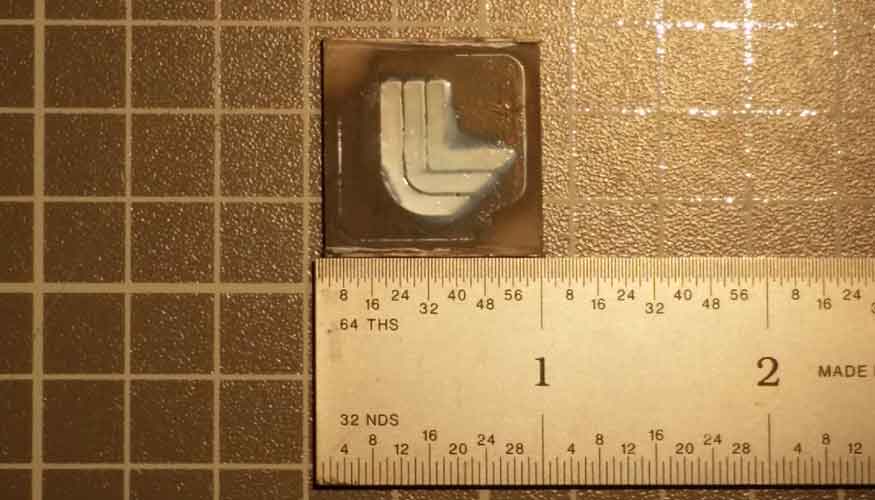Lawrence Livermore National Laboratory Develops New Additive Manufacturing Process

This proof-of-concept logo was 3D printed using a new additive manufacturing process, light-directed electrophoretic deposition. Courtesy of LLNL.
Latest News
April 14, 2014
Our electric grid would look very different if Nikola Tesla hadn’t looked at Thomas Edison’s plans for direct current and thought he could do better. In a similar vein, although it might seem like there is an additive manufacturing (AM) process for almost any type of production, there’s always room for fresh ideas. In this case, the new idea comes in the form of a different method for using an existing technology.
The Lawrence Livermore National Laboratory (LLNL) has developed a way to use electrophoretic deposition (EPD) for AM in a new process the lab is calling light-directed electrophoretic deposition. EPD itself has been used for almost 100 years as a way of coating materials through deposition. As an example, new cars can be primed using EPD by moving a positively charged car body into a negatively charged dunk tank.

EPD can deposit materials on a wide variety of surfaces, including ceramics, metals, polymers, and even living cells, but has been limited to area dispersal patterns. LLNL’s project has discovered a method to force material buildup in specific areas, turning the old technology into an AM process. Researchers used photoconductive electrodes and DC electrical fields to direct the patterns of deposition, encouraging a layering effect in targeted areas where the light comes in contact with the photoconductor’s surface.
From the press release:
Researchers used light-directed EPD to produce an alumina ceramic-tungsten nanoparticle composite. Initially, the tungsten nanoparticles were deposited across the photoconductive surface, then illuminated through a laser cut aluminum mask. A different shaped mask was then substituted along with the new material, to deposit the ceramic material. In the future, the aluminum masks will be replaced by a digitally projected mask, similar to those found in DLP televisions, for a completely automated deposition system.
The results of the research have been published in Advanced Materials in a paper named “Light-Directed Electrophoretic Deposition: A New Additive Manufacturing Technique for Arbitrarily Patterned 3D Composites.”
“We have presented a novel electrophoretic deposition technique based on using light to pattern materials on a photoconductive layer. This represents a large step in advancing electrophoretic deposition as a method of fabricating complex 3D patterned composites,” said Andrew Pascall, research engineer and lead author.
Below you’ll find a video from LLNL extoling the virtues of AM.
Source: LLNL
Subscribe to our FREE magazine, FREE email newsletters or both!
Latest News
About the Author
John NewmanJohn Newman is a Digital Engineering contributor who focuses on 3D printing. Contact him via [email protected] and read his posts on Rapid Ready Technology.
Follow DE





